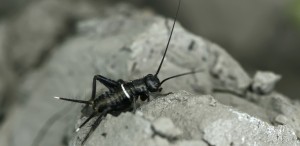About Cricket infestations
 Cricket infestations are generally seasonal. Problems by crickets most often occur in the fall as evenings become cooler and crickets enter buildings seeking warmth and shelter. They’re attracted to lights around a building at night. Crickets can cause damage to fabrics or other materials. In addition, they make a chirping sound that can be very annoying.
Cricket infestations are generally seasonal. Problems by crickets most often occur in the fall as evenings become cooler and crickets enter buildings seeking warmth and shelter. They’re attracted to lights around a building at night. Crickets can cause damage to fabrics or other materials. In addition, they make a chirping sound that can be very annoying.
The most common crickets to invade structures are the house cricket and the field cricket, which are similar in appearance.
House crickets range in length from ½” to ¾”. They may be light yellowish brown or shiny black. This species has long, slender antennae. The field cricket is slightly larger and usually brown or black. Females of both species have a long, thin ovipositor projecting from the tip of the abdomen.
Crickets usually overwinter in the egg stage. Outdoors, house crickets lay up to 725 eggs and produce only one generation per year. Field crickets lay 150 to 400 eggs and produce up to three generations per year. House crickets may deposit eggs indoors in sheltered areas, such as in crevices and behind baseboards.
Crickets often enter homes seeking moisture. They are attracted to clothing soiled with perspiration or stains, especially wool, cotton, silk and synthetics. They eat large areas of fabric, as opposed to small holes that moths make.


